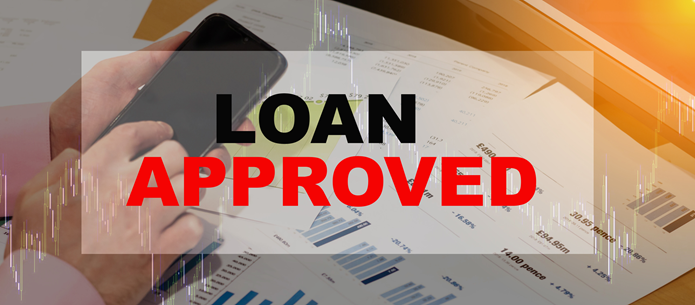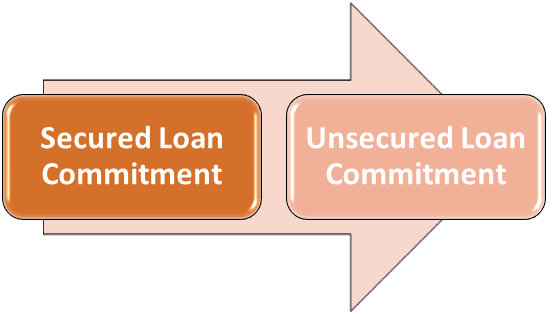What is loan commitment?
A loan commitment is an accord by a financial institution or commercial bank to lend money to an individual or a business for various purposes, such as home purchases by individuals or significant investments by businesses.
The loan could be a single lump-sum payment or, in the case of an open-end loan promise, a line of credit that the borrower can utilise whenever they need it.
Highlights
- A loan commitment is an accord by a financial institution or commercial bank to lend money to an individual or a business for various purposes.
- Individuals trying to purchase a house or corporations are looking to make a large purchase can benefit from loan commitments.
- The loan can be made as a one-time payment or as a line of credit that the borrower can tap into as needed.
Frequently Asked Questions (FAQs)
What is the process of making a loan commitment?

Source:© Knopparus | Megapixl.com
A loan commitment is a lender's consent to provide a borrower with a specific credit or loan amount. It's also called a commitment letter, and it outlines all the loan's terms and conditions.
A letter from the lending institution, a mortgage bank, credit union, or commercial bank usually promises a business or an individual loan. The letter contains information on the financial institution's promise to lend a specified amount of money under certain conditions shortly.
Additionally, a loan commitment letter explains the lender's satisfaction with the borrower's loan application and clarifies the borrower's credit score and history. Finally, through the letter, the lender pledges to give the borrower a specific amount of money.
Financial organisations make loan promises based on the borrower's creditworthiness. If the loan is secured, the value of some collateral and this collateral might be a house in the case of individual consumers. After that, the funds made accessible under the loan commitment can be used by borrowers up to the agreed-upon amount.
Many loan commitments are open-ended, implying that the loan is not a one-time, lump-sum payment that the borrower must repay. Rather, the borrower will be permitted to keep using the borrowed funds as long as they repay it. This is what makes it related to a revolving credit line on a credit card. If the borrower utilises a portion of the borrowed money, then pays it back, the lender adds the payment to the principal balance. This loan commitment is based on the borrower's credit history and necessitates the borrower to meet specific requirements.
A loan commitment, on the other hand, can be secured or unsecured. A secured loan requires collateral, whereas an unsecured loan does not.
What kinds of loan commitments are there?

Source: © Fotovladimir991 | Megapixl.com
Secured Loan Commitment
A secured commitment is frequently backed by collateral and is dependent on the borrower's creditworthiness.
Customers can take advantage of two types of open-end secured loan commitments.
- Secured credit card– Collateral is money in a bank account.
- Home equity line of credit (HELOC)– The equity in a home acts as collateral in this scenario.
The credit limit for a secured loan commitment is typically larger than the credit limit for an unsecured loan commitment since the credit limit is normally defined by the value of the secured asset.
In addition, it has some advantages over taking out an unsecured loan. For example, the interest rate may be cheaper in this scenario, and the repayment period may be longer.
However, compared to an unsecured loan, the approval process entails more paperwork typically and takes longer.
The lender keeps the title or deed to the collateral until the loan is fully paid off or places a lien on the asset. If you default on a secured loan, the lender may take possession of and sell the secured asset, and you will be liable for repaying the debt with the proceeds.
Unsecured Loan Commitment
It relies mainly on the borrower's creditworthiness, lacks collateral, and is best exemplified by a credit card. The greater the credit score of the borrower, the larger the loan limit.
The primary downside of taking out an unsecured loan is the higher interest rate due to the debt's lack of security. It usually has a set minimum payment schedule as well as a fixed interest rate.
However, there are advantages to this sort of loan because the application procedure frequently involves less documentation and approval time than a secured loan commitment.

Source: Copyright © 2021 Kalkine Media
What are the benefits and drawbacks of loan commitments?
Open-end loan commitments are more flexible and may be useful for dealing with financial emergencies or repaying unexpected short-term debt obligations.
Furthermore, HELOCs often have low interest rates, making payments more manageable. Consumers can use secured credit cards to create or rebuild their credit; paying bills on time and keeping overall credit card debt low will enhance their credit scores, and they may be qualified for an unsecured credit card in the future.
Borrowers who take out too much money and cannot repay the loan might have to give up their collateral if they get a secured loan commitment. This could, for example, imply that the lender takes possession of the borrower's collateral and sells it. In addition, unsecured commitments have a larger rate of interest than secured ones, making borrowing pricier.
What are some loan commitment examples?
The best example of a non-revolving secured loan is a house mortgage. This form of loan is secured by collateral, which is a house in this case. The account will be cancelled once the house is paid off. Another example may be an automotive loan.
A personal loan and a student loan are the best examples of a non-revolving unsecured loan.
The good example of a revolving secured loan is a home equity line of credit (HELOC), and the home secures the loan. If you've been authorised for a HELOC, you'll have a limited loan amount, but you can use the principal, pay it off, and use it again if you keep up with the payments.
A credit card loan is the finest instance of a revolving unsecured loan. Your credit card will have a credit limit, but there will be no collateral attached to it. After you pay off a portion of your credit card limit by making a purchase, you will be able to use it again.
 Please wait processing your request...
Please wait processing your request...